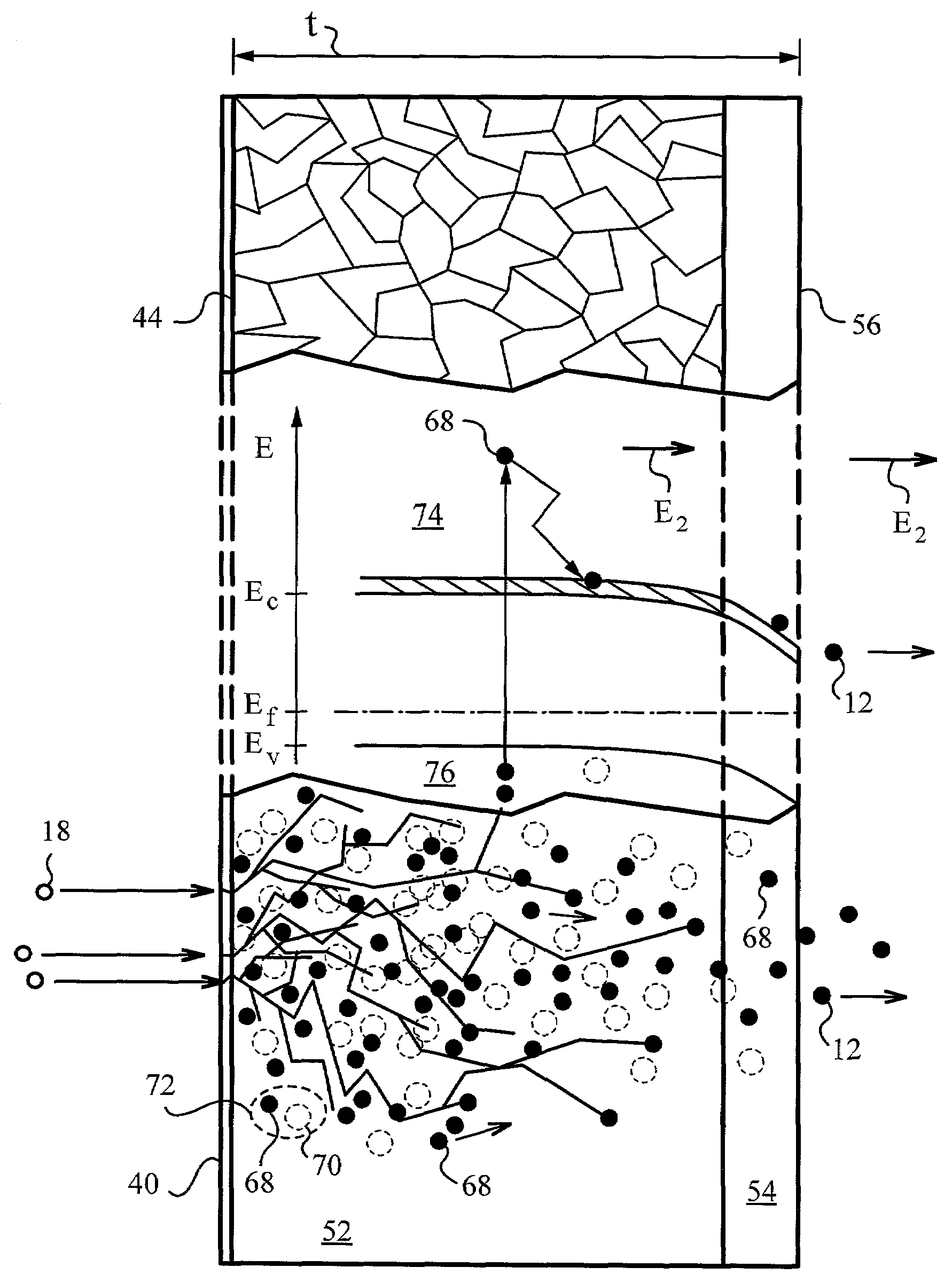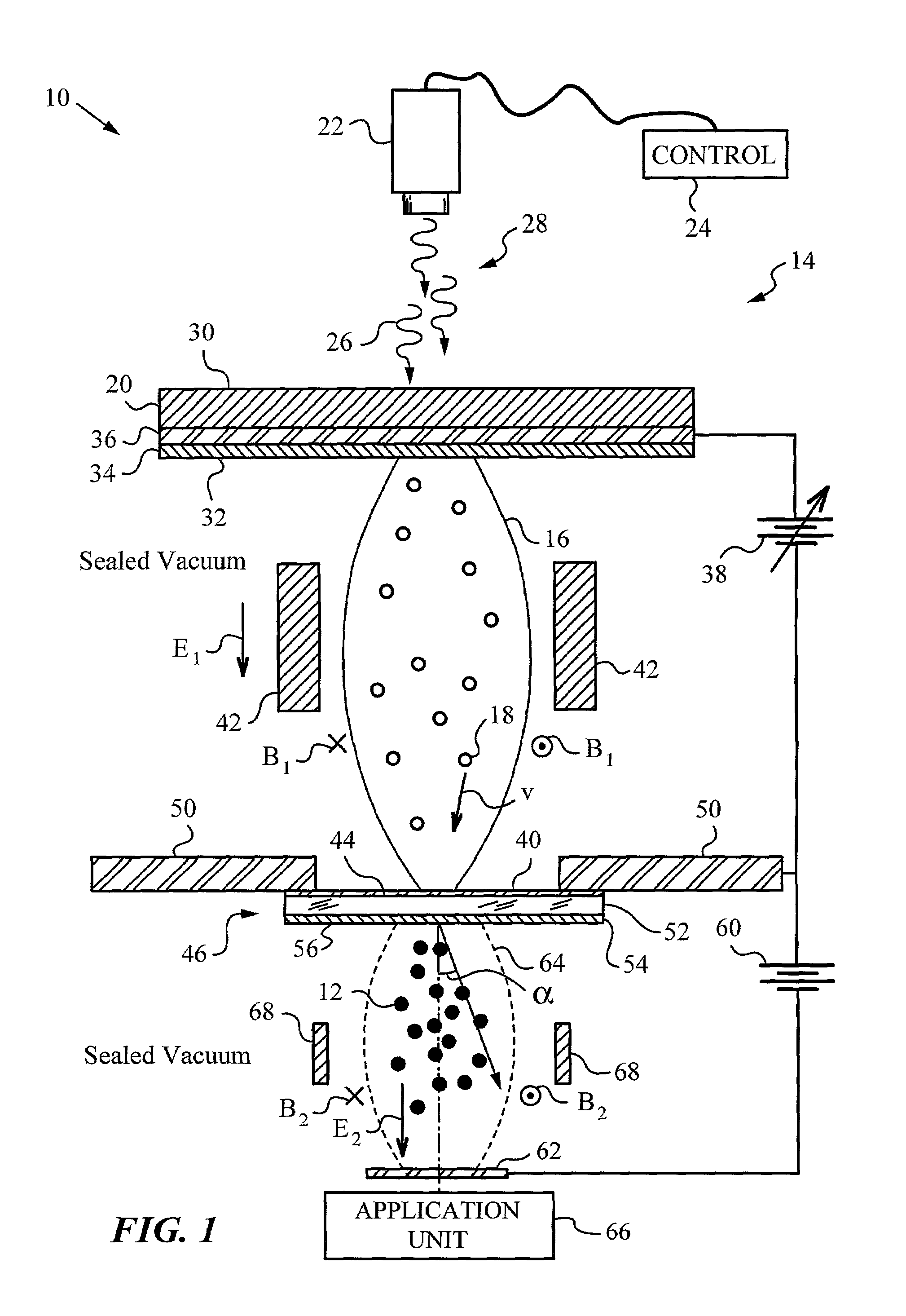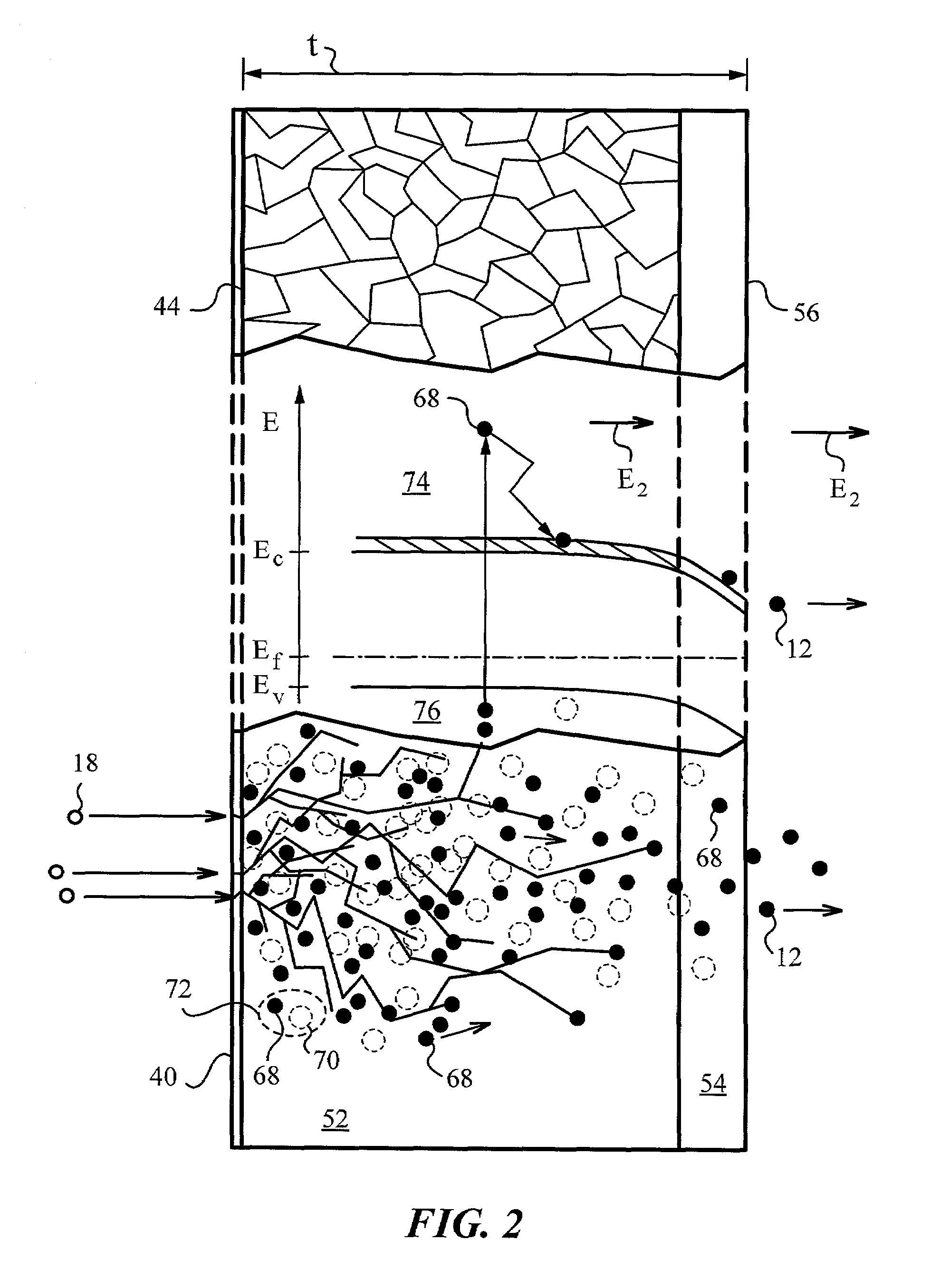Electron bombardment of wide bandgap semiconductors for generating high brightness and narrow energy spread emission electrons
a wide bandgap semiconductor and electron beam technology, applied in the direction of discharge tube/lamp details, discharge tube luminescnet screen, discharge tube main electrode, etc., can solve the problem of limiting the applicability of many of these devices, the photocathode that operates with available light sources and optics is very sensitive to contamination, and the standard cathode cannot deliver such high brightness beams with the requisite narrow energy spread, etc. problem, to achieve the effect of small emission electron energy
- Summary
- Abstract
- Description
- Claims
- Application Information
AI Technical Summary
Benefits of technology
Problems solved by technology
Method used
Image
Examples
Embodiment Construction
[0026]FIG. 1 illustrates in a plan schematic diagram a preferred embodiment of a wide bandgap semiconductor source 10 of emission electrons 12. Source 10 has an arrangement 14 for producing and directing a beam 16 of seed electrons 18 at a target 46 mounted on a stage 50. Target 46 contains a layer of wide bandgap semiconductor 52 selected to produce and release emission electrons 12 under bombardment with beam 16 of seed electrons 18. For the purposes of this invention wide bandgap semiconductor 52 has a bandgap of at least 1.9 eV.
[0027]In the present embodiment, arrangement 14 includes a photocathode 20 and a light source 22 controlled by a control unit 24. Light source 22 can be a laser, a lamp or any other suitable source capable of producing photons 26 of sufficient energy to cause photoinduced generation of seed electrons 18 in photocathode 20 upon illumination with a light beam 28 containing photons 26. It will be appreciated by a person skilled in the art that any appropriat...
PUM
 Login to View More
Login to View More Abstract
Description
Claims
Application Information
 Login to View More
Login to View More - R&D
- Intellectual Property
- Life Sciences
- Materials
- Tech Scout
- Unparalleled Data Quality
- Higher Quality Content
- 60% Fewer Hallucinations
Browse by: Latest US Patents, China's latest patents, Technical Efficacy Thesaurus, Application Domain, Technology Topic, Popular Technical Reports.
© 2025 PatSnap. All rights reserved.Legal|Privacy policy|Modern Slavery Act Transparency Statement|Sitemap|About US| Contact US: help@patsnap.com



